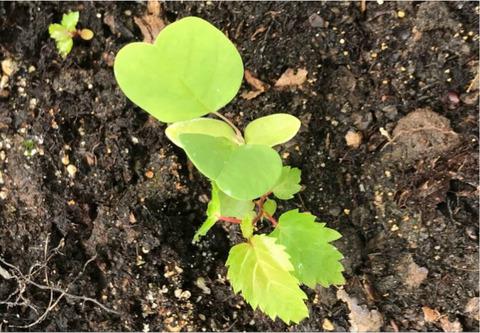当前位置:
X-MOL 学术
›
Appl. Veg. Sci.
›
论文详情
Our official English website, www.x-mol.net, welcomes your feedback! (Note: you will need to create a separate account there.)
Forest patch size predicts seed bank composition in urban areas
Applied Vegetation Science ( IF 2.8 ) Pub Date : 2020-10-23 , DOI: 10.1111/avsc.12534 Danica A. Doroski 1 , Marlyse C. Duguid 1 , Mark P. Ashton 1
Applied Vegetation Science ( IF 2.8 ) Pub Date : 2020-10-23 , DOI: 10.1111/avsc.12534 Danica A. Doroski 1 , Marlyse C. Duguid 1 , Mark P. Ashton 1
Affiliation

|
Co-ordinating Editor: Vigdis Vandvik Abstract Questions: As urban areas expand around the world, understanding how to restore and maintain forests within the urban environment becomes increasingly important. Given that a comprehensive understanding of regeneration dynamics is critical to designating appropriate management interventions we ask the following: how does regeneration, vis-à-vis the buried seed bank, vary in heterogenous urban forests? And, can forest patch size be used to predict regeneration and consequent management interventions? Location: Vacant lots and public parks throughout New Haven, CT, USA. Methods: We sampled buried seed banks in 131 plots distributed across three forest patch sizes ranging from large intact parks (95–126 ha), to small parks (1–19 ha), and vacant lots (0.05–0.65 ha). We collected soil samples from the surface mineral soil and stratified them over sand in a greenhouse over a period of five months to record germination. Results: By examining seed bank floristics in a range of forest patch sizes we found that species composition, nativity, and dominance of specific functional groups shifted with patch size representing a spectrum of urbanization within just one city. Seed bank floristics in large parks more closely resembled results from seed bank studies in rural forests with over 85% native germinants on average. In contrast, vacant lots were dominated by non-native germinants and more ruderal species indicative of earlier successional stages. Seed banks in small parks were variable and in some cases were more similar to large parks or vacant lots. Conclusions: Our findings suggest that large parks in urban areas may be largely selfsustaining whereas smaller parks may require more intensive management for site rehabilitation, especially in early states of succession. Furthermore, our results confirm the highly heterogenous nature of urban forest patches and call for more systematic sampling of urban areas to capture this variation and improve management prescriptions and outcomes.
中文翻译:

森林斑块大小可预测城市地区的种子库组成
协调编辑:Vigdis Vandvik 摘要问题:随着城市地区在世界范围内扩大,了解如何在城市环境中恢复和维护森林变得越来越重要。鉴于对更新动态的全面了解对于指定适当的管理干预措施至关重要,我们提出以下问题:与埋藏的种子库相比,异质城市森林中的更新如何变化?并且,森林斑块大小能否用于预测再生和随后的管理干预?位置:美国康涅狄格州纽黑文市的空地和公园。方法:我们对分布在三个森林斑块大小的 131 个地块中的埋藏种子库进行采样,范围从大型完整公园(95-126 公顷)到小型公园(1-19 公顷)和空地(0.05-0.65 公顷)。我们从表层矿质土壤中收集土壤样品,并在五个月的时间里将它们分层放在温室中的沙子上以记录发芽情况。结果:通过检查各种森林斑块大小的种子库植物区系,我们发现物种组成、出生和特定功能群的优势随着斑块大小发生变化,斑块大小仅代表一个城市内的城市化范围。大型公园的种子库植物区系与农村森林种子库研究的结果更相似,平均超过 85% 的本地发芽植物。相比之下,空地主要由非本地萌芽植物和更原始的物种主导,表明早期演替阶段。小公园的种子库是可变的,在某些情况下更类似于大公园或空地。结论:我们的研究结果表明,城市地区的大型公园可能在很大程度上是自给自足的,而较小的公园可能需要对场地修复进行更集中的管理,尤其是在早期的演替状态中。此外,我们的结果证实了城市森林斑块的高度异质性,并呼吁对城市地区进行更系统的抽样,以捕捉这种变化并改进管理方案和结果。
更新日期:2020-10-23
中文翻译:

森林斑块大小可预测城市地区的种子库组成
协调编辑:Vigdis Vandvik 摘要问题:随着城市地区在世界范围内扩大,了解如何在城市环境中恢复和维护森林变得越来越重要。鉴于对更新动态的全面了解对于指定适当的管理干预措施至关重要,我们提出以下问题:与埋藏的种子库相比,异质城市森林中的更新如何变化?并且,森林斑块大小能否用于预测再生和随后的管理干预?位置:美国康涅狄格州纽黑文市的空地和公园。方法:我们对分布在三个森林斑块大小的 131 个地块中的埋藏种子库进行采样,范围从大型完整公园(95-126 公顷)到小型公园(1-19 公顷)和空地(0.05-0.65 公顷)。我们从表层矿质土壤中收集土壤样品,并在五个月的时间里将它们分层放在温室中的沙子上以记录发芽情况。结果:通过检查各种森林斑块大小的种子库植物区系,我们发现物种组成、出生和特定功能群的优势随着斑块大小发生变化,斑块大小仅代表一个城市内的城市化范围。大型公园的种子库植物区系与农村森林种子库研究的结果更相似,平均超过 85% 的本地发芽植物。相比之下,空地主要由非本地萌芽植物和更原始的物种主导,表明早期演替阶段。小公园的种子库是可变的,在某些情况下更类似于大公园或空地。结论:我们的研究结果表明,城市地区的大型公园可能在很大程度上是自给自足的,而较小的公园可能需要对场地修复进行更集中的管理,尤其是在早期的演替状态中。此外,我们的结果证实了城市森林斑块的高度异质性,并呼吁对城市地区进行更系统的抽样,以捕捉这种变化并改进管理方案和结果。



























 京公网安备 11010802027423号
京公网安备 11010802027423号